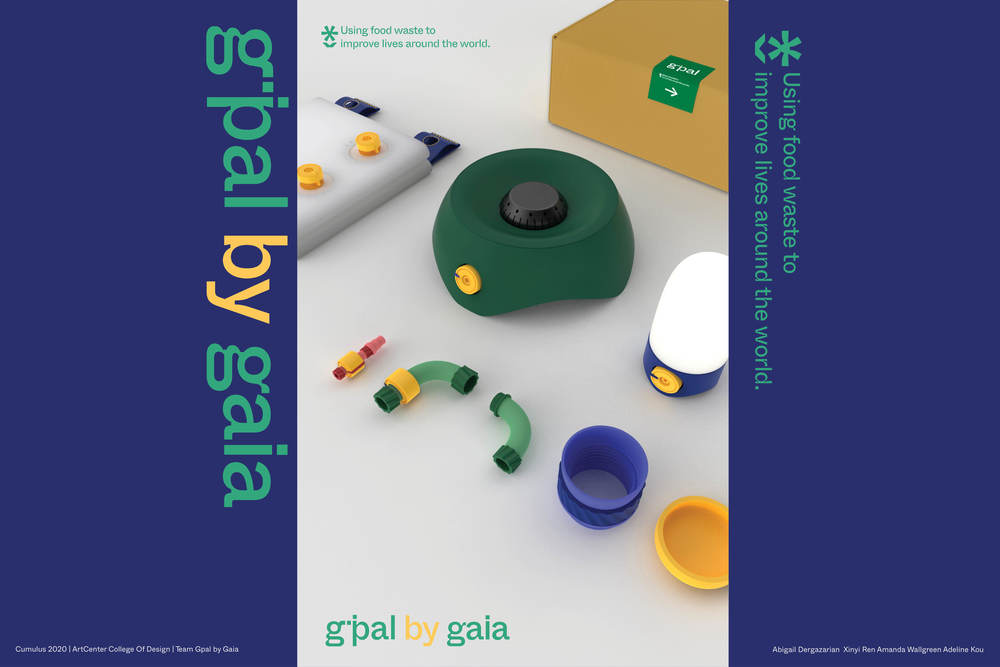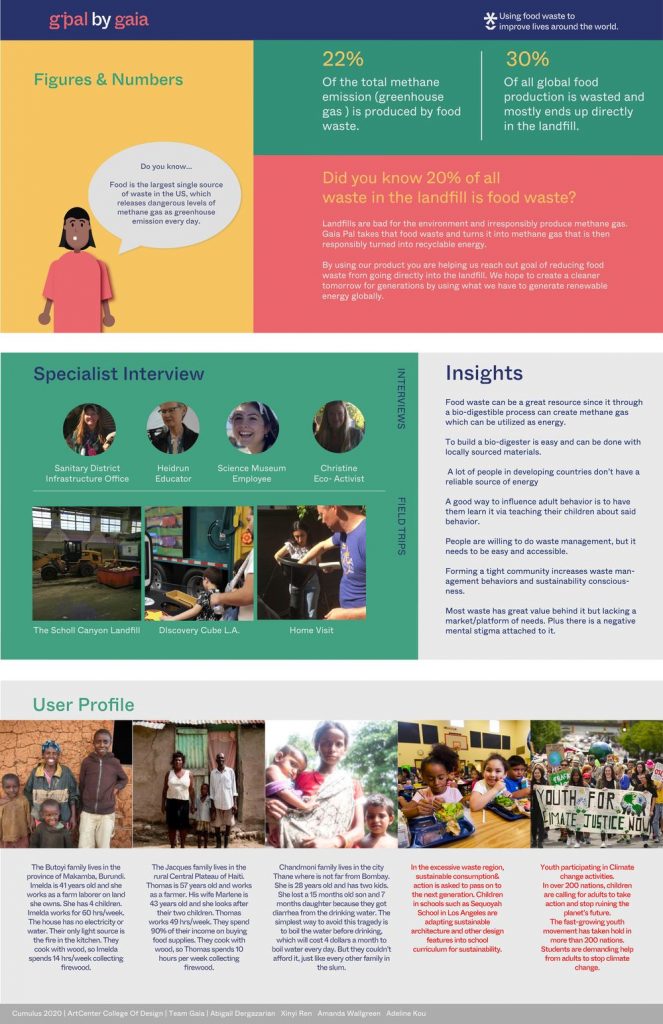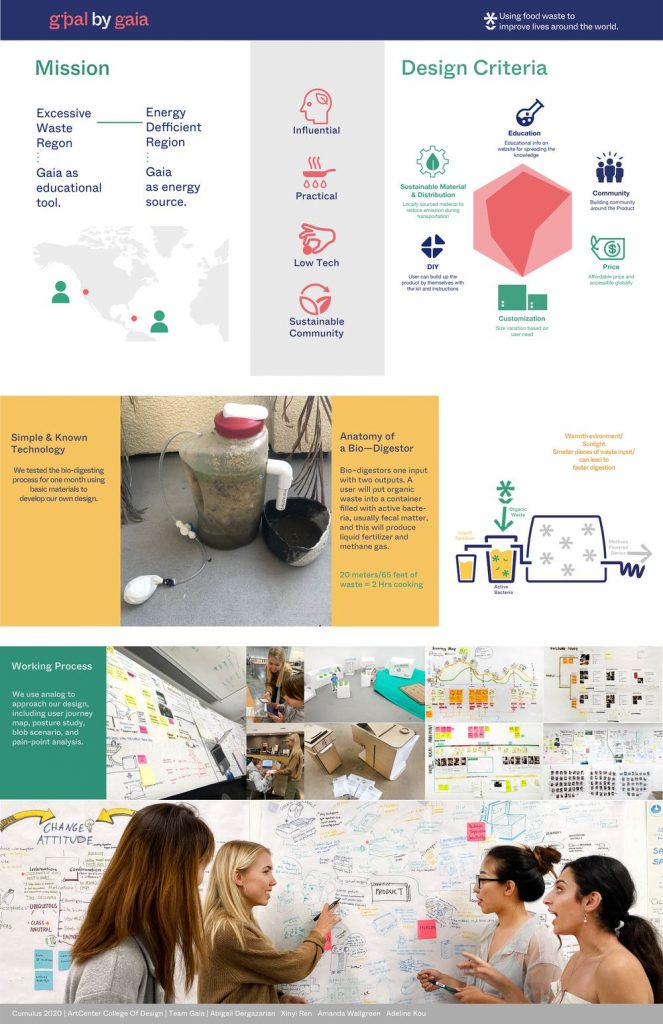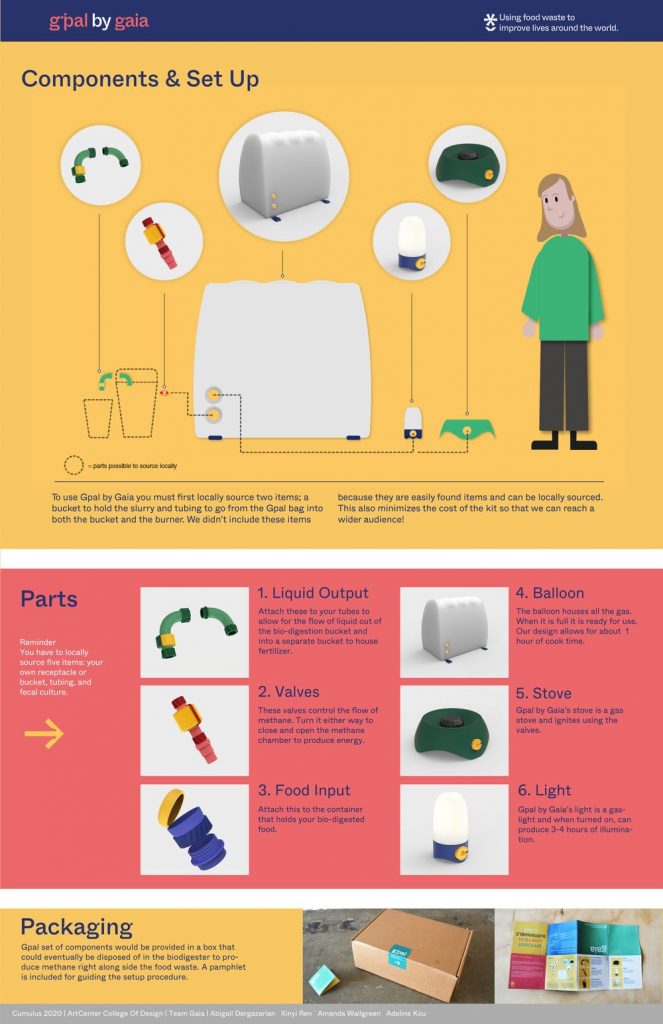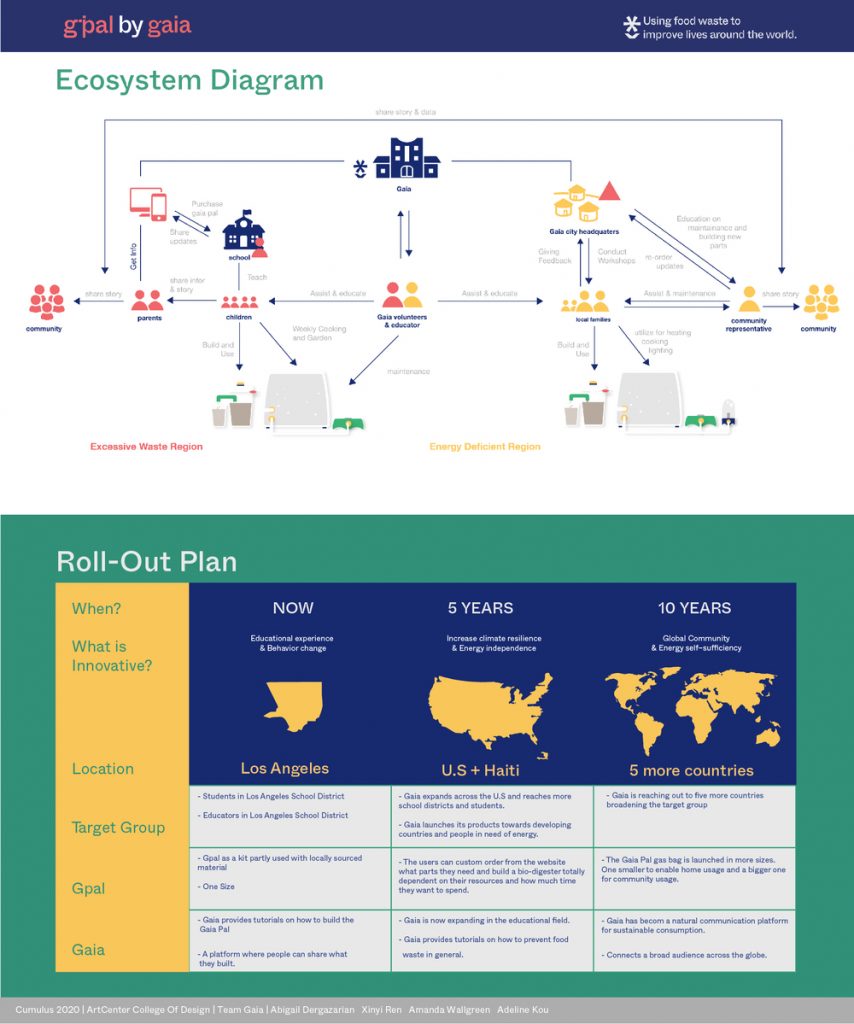Honorable Mention
Gpal by Gaia
Gpal by Gaia’s is a biodigestor that helps reduce food waste from being disposed in landfills
Solution
Up to 30% of global food production is wasted causing 22% of total greenhouse emissions (methane) to be produced from said food waste. Our solution, Gpal by Gaia is a biodigester that gives food waste a new life. It takes the waste and using a culture of bacteria, produces both methane gas that can be responsibly stored and used as power and fertilizer that can be used to grow more food. It helps educate and provides a renewable, decentralized energy source to homes in energy-deficient regions.
Project Description
Gaia’s goal is to dramatically reduce food waste being disposed of in landfills and instead transform this waste stream into agricultural nutrients and renewable energy. Circularity and responsible consumption is at the core of Gaia and has informed the design of the system of product and service. Gaia’s Gpal is a biodigester that converts food waste. Using a simple process, the biodigester is easily built from Gpal components and locally sourced materials. Our well-designed and streamlined kit includes basic parts and requires the user to source some repairable and recyclable items from local supplies. This Gaia-User partnership is a key element of the system of sustainable consumption. In addition, we hope to educate younger generations about sustainable behaviors and about the power they have to create their future and provide for the planet.
Overview of the Solution
Up to 30% of global food production is wasted annually and a total of 22% of total greenhouse emissions (methane) is produced by food waste which equates to 20% of all waste in landfills. Gpal by Gaia offers a solution to this problem by giving food waste a new life. Gpal is a biodigester that takes food waste and using a live culture of bacteria, turns it into two outputs. The first is methane gas that can be responsibly stored and used as power and the second is fertilizer that can be used to grow more food. Gpal is compact, transportable and accessible making it perfect for teaching younger generations how to be eco-conscious on the homefront, as well as providing a renewable, decentralized energy source to homes in energy-deficient regions. The Gaia system of products and services provides a viable system to deliver nutrients for agriculture and a decentralized, renewable micro-energy source. Gaia’s goal is to divert by 80% food waste from landfill disposal, by phasing in a community-based global effort to capture and transform food waste. Gaia is facilitated by Gpal, a system of parts and a universal design that is adaptable to local conditions and resources, and increases the climate resilience of the community it operates in. Circularity and responsible consumption is at the core of Gaia, and has informed the design of the system of product and service. The Gaia project provides a means of creating a circular food economy by addressing food waste and transforming it into a useful source of agricultural nutrients and energy. This gives economic value to what we usually consider unusable waste. It mimics a ‘natural economy’ of resources by having one of its outputs be a natural fertilizer, indirectly reducing greenhouse gases associated with the production of synthetic fertilizers. Gpal set of components would be provided in a box that itself could eventually be used in the biodigester to produce methane right alongside the food waste.
PROJECT TEAM
Xinyi Ren, Abigail Dergazarian, Amanda Wallgreen and Adeline Kou
INSTITUTION
ArtCenter College of Design, United States of America
Category
System
FACULTY/COURSE ADVISOR
Heidrun Mumper-Drumm, Brian Boyl, Kristina Castella
STAKEHOLDERS
Stakeholders will be locally sourced partners. Implementing can be complex based on the different locations and their social and cultural differences. Some examples could be: local government, educational institutions, volunteer groups, community leaders, professional organizations and farmers markets.
